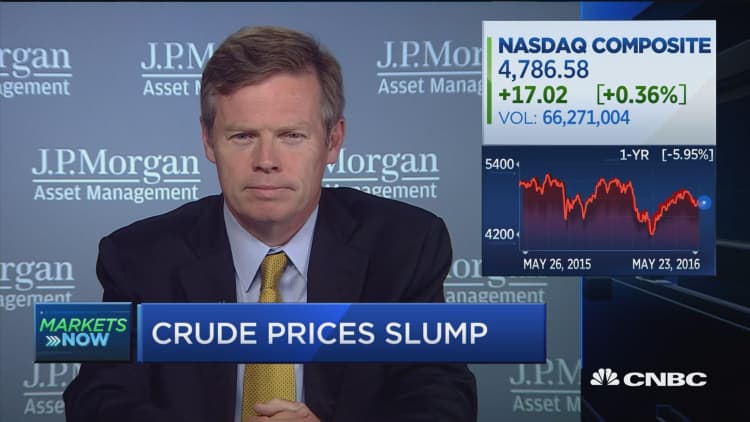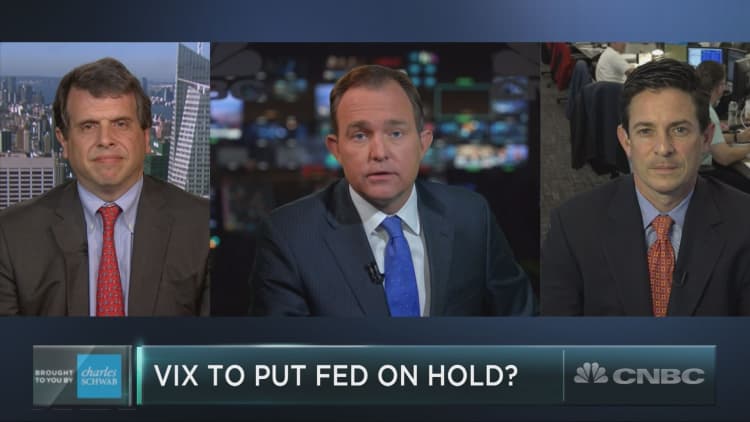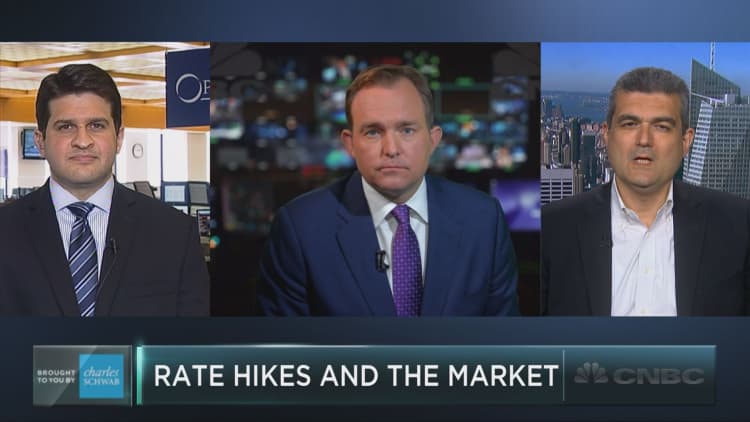


Investors are slowly coming to grips with a summertime Fed rate hike, but the timing could get interesting.
Since Fed chairs started holding quarterly post-meeting news conferences in 2011, it's been the market's assumption that there would be no hikes without someone there to explain why. The test cases for that theory, however, have been scant, being as there's been only one rate rise since then, at the December 2015 meeting at which there was a conference.
However, if conditions unfold according to a scenario that increasingly is gaining traction, the no-news-conference-no-rate-hike assumption is about to see a stiff challenge.
Current expectations are that the U.S. central bank will enact its second post-Great Recession rate hike not at the June Federal Open Market Committee meeting, after which there is a news conference, but rather July, where is no scheduled session between Chair Janet Yellen and the press.
If nothing else, such a move would strike a blow against conventional wisdom.
"We think the obvious solution is for the Fed — assuming the data does firm by the time of the June meeting — to use June to set the stage for a July hike," Evercore ISI economists Krishna Guha and Ernie Tedeschi said in a note to clients that stated the rate rise would be "conditional on the Brexit risk event passing without major dislocations and the US data continuing broadly in the same channel consistent with ongoing progress on employment and inflation."
Indeed, as a practical matter waiting for the vote on whether the U.K. will quit the European Union — and gauging whatever market disruption would follow — would seem prudent. Similarly, even Fed officials pressing for higher rates have said the data will have to hold up to get the Fed to move.
However, there's one additional benefit that strikes more closely to the natural question of what the big deal would be if the Fed moves in July as opposed to June.
Last week's release of minutes from the April meeting indicated that some officials were concerned that the market had grown too complacent about the Fed's desire to normalize rates from the near-zero financial crisis levels.
Making a move during an off month could both shake that complacency, plus put the financial market on notice that every meeting is a live one.
"We're going to hear a lot more from Fed officials and they're all going to be telling us one thing, which is the market is still underestimating the expectation of a rate hike this summer," Mohamed El-Erian, chief economic advisor at Allianz, told CNBC.
Those expectations, however, are changing.
Where traders just a week ago were pricing in virtually no chance of a June move, the probability has risen to 26 percent — far from a lock, but considerably higher than before the release of the April minutes. July, however, now has a probability of 53 percent, according to the CME.
The market, however, remains complacent about two hikes this year, assigning just a 38 percent chance for the Fed to move twice. Fed funds futures traders expect the central bank's target rate to be at 0.63 percent by year's end from the current 0.37 percent.
"The market wants to hear from Janet Yellen," said Quincy Krosby, market strategist at Prudential Financial. "It's one thing to hear from surrogates. ... The market is a bit confused as to whether this represents what Janet Yellen really wants if this is the message she wants to telegraph to markets."
The Fed faces a difficult time in justifying a rate hike.
Economic growth remains slow, with the Atlanta Fed expecting 2.5 percent GDP growth in the second quarter after a meager 0.5 percent rise in the first three months of 2016. Job growth has tailed off a touch, a manufacturing reading Monday showed the sector at a standstill and the consumer remains unwilling to spend.
Many Fed watchers had expected Yellen and her dovish majority to hold off on another hike until inflation firmed, but it now appears that the FOMC is willing to tighten even without meeting its target.
"This is more normalization as opposed to hiking," Krosby said. "It's getting rates commensurate with where they believe growth is. This is just getting it at a level that is not warning of impending recession or an economy that's contracting."




